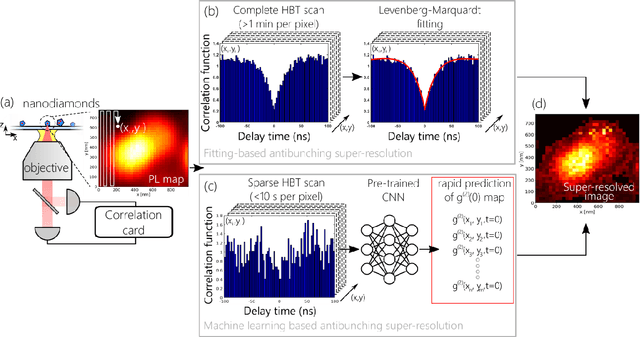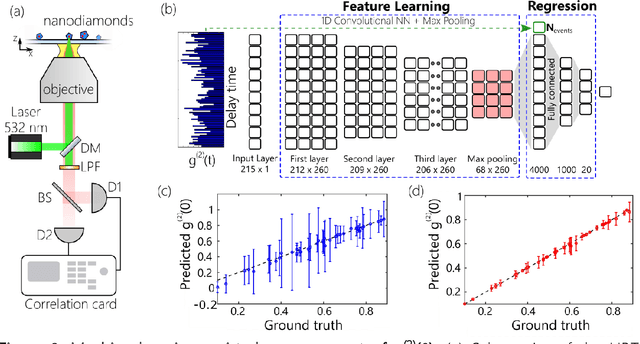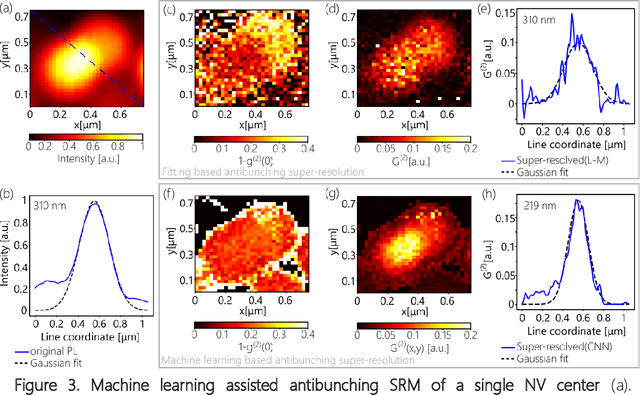Alexander V. Kildishev
PearSAN: A Machine Learning Method for Inverse Design using Pearson Correlated Surrogate Annealing
Dec 26, 2024Abstract:PearSAN is a machine learning-assisted optimization algorithm applicable to inverse design problems with large design spaces, where traditional optimizers struggle. The algorithm leverages the latent space of a generative model for rapid sampling and employs a Pearson correlated surrogate model to predict the figure of merit of the true design metric. As a showcase example, PearSAN is applied to thermophotovoltaic (TPV) metasurface design by matching the working bands between a thermal radiator and a photovoltaic cell. PearSAN can work with any pretrained generative model with a discretized latent space, making it easy to integrate with VQ-VAEs and binary autoencoders. Its novel Pearson correlational loss can be used as both a latent regularization method, similar to batch and layer normalization, and as a surrogate training loss. We compare both to previous energy matching losses, which are shown to enforce poor regularization and performance, even with upgraded affine parameters. PearSAN achieves a state-of-the-art maximum design efficiency of 97%, and is at least an order of magnitude faster than previous methods, with an improved maximum figure-of-merit gain.
Time-Reflection of Microwaves by a Fast Optically-Controlled Time-Boundary
Oct 03, 2023Abstract:When an electromagnetic (EM) wave is propagating in a medium whose properties are varied abruptly in time, the wave experiences refractions and reflections known as "time-refractions" and "time-reflections", both manifesting spectral translation as a consequence of the abrupt change of the medium and the conservation of momentum. However, while the time-refracted wave continues to propagate with the same wave-vector, the time-reflected wave is propagating backward with a conjugate phase, despite the lack of any spatial interface. Importantly, while time-refraction is always significant, observing time-reflection poses a major challenge - because it requires a large change in the medium occurring within a single cycle. For that reason, time-reflection of EM waves was observed only recently. Here, we present the observation of microwave pulses at the highest frequency ever observed (0.59 GHz), and the experimental evidence of the phase-conjugation nature of time-reflected waves. Our experiments are carried out in a periodically-loaded microstrip line with optically-controlled picosecond-switchable photodiodes. Our system paves the way to the experimental realization of Photonic Time-Crystals at GHz frequencies.
Machine learning assisted quantum super-resolution microscopy
Jul 07, 2021



Abstract:One of the main characteristics of optical imaging systems is the spatial resolution, which is restricted by the diffraction limit to approximately half the wavelength of the incident light. Along with the recently developed classical super-resolution techniques, which aim at breaking the diffraction limit in classical systems, there is a class of quantum super-resolution techniques which leverage the non-classical nature of the optical signals radiated by quantum emitters, the so-called antibunching super-resolution microscopy. This approach can ensure a factor of $\sqrt{n}$ improvement in the spatial resolution by measuring the n-th order autocorrelation function. The main bottleneck of the antibunching super-resolution microscopy is the time-consuming acquisition of multi-photon event histograms. We present a machine learning-assisted approach for the realization of rapid antibunching super-resolution imaging and demonstrate 12 times speed-up compared to conventional, fitting-based autocorrelation measurements. The developed framework paves the way to the practical realization of scalable quantum super-resolution imaging devices that can be compatible with various types of quantum emitters.
 Add to Chrome
Add to Chrome Add to Firefox
Add to Firefox Add to Edge
Add to Edge